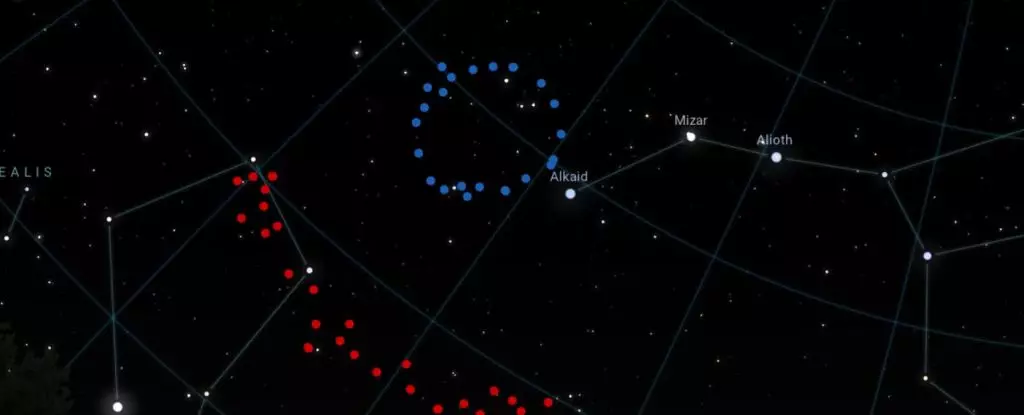Recent astronomical discoveries are shaking the very foundation of our understanding of the cosmos. One such revelation is the identification of a colossal cosmic structure dubbed the “Big Ring,” which encompasses a staggering 1.3 billion light-years in diameter. This finding emerges from light that has traveled for an unfathomable 6.9 billion years to reach Earth, offering a glimpse into the distant past of our universe. The Big Ring’s existence raises profound questions about the formation and evolution of galaxies, challenging established theories in cosmology and igniting curiosity among scientists and enthusiasts alike.
Led by astronomer Alexia Lopez from the University of Central Lancashire, the discovery of the Big Ring was presented at the 243rd meeting of the American Astronomical Society. This revelation follows another significant find, the “Giant Arc,” a massive structure located in the same region of the sky and at a similar distance from our planet. Announced in 2021, the Giant Arc baffled many astronomers, and the unveiling of the Big Ring only deepens the mystery surrounding these unprecedented structures. Lopez succinctly captured the conundrum, stating, “Neither of these two ultra-large structures is easy to explain in our current understanding of the universe.”
The conventional cosmological framework posits that matter should be uniformly distributed across vast expanses of space. This hypothesis, known as the Cosmological Principle, stipulates that, on large scales, any region of space should resemble all others. However, the immense size and peculiar shape of both the Big Ring and the Giant Arc suggest a deviation from this principle. Lopez noted that current theoretical models define a maximum size for cosmic structures at approximately 1.2 billion light-years, yet these newly discovered formations exceed that limit by a significant margin.
Moreover, the Big Ring’s unique corkscrew configuration implies that it cannot be classified as a Baryon Acoustic Oscillation (BAO), which typically manifests as uniformly sized spherical arrangements of galaxies measuring around 1 billion light-years in diameter. The existence of the Big Ring calls for a re-evaluation of existing models of cosmic evolution.
Several theories have been proposed to make sense of these cosmic oddities. One compelling notion is rooted in Roger Penrose’s conformal cyclic cosmology, which suggests that the universe undergoes infinite cycles of expansion culminating in Big Bang events. This model posits that ring structures could logically arise within such a framework, although it too faces significant challenges in terms of empirical validation.
Another intriguing possibility points toward the existence of topological defects within the fabric of space-time, commonly referred to as cosmic strings. These hypothetical structures are akin to minute wrinkles in space-time, formed in the universe’s primordial epoch during rapid expansion. While convincing theoretical support exists for cosmic strings, tangible evidence has yet to be uncovered.
At this stage, the significance of the Big Ring and the Giant Arc remains elusive. Critics might speculate that these structures are mere chance alignments of galaxies. However, the probability of such coincidences occurring at this scale seems exceptionally low. The quest now becomes one of uncovering additional such structures scattered throughout the universe. If more arrangements resembling the Big Ring and the Giant Arc can be identified, it would bolster the argument that these formations are not anomalies but rather integral features of the universe’s structure.
Lopez expressed her astonishment, pointing to the implications of current cosmological theories: “From current cosmological theories we didn’t think structures on this scale were possible. We could expect maybe one exceedingly large structure in all our observable Universe.” The discovery of the Big Ring not only invites a reassessment of our cosmological models but also opens a new chapter in the exploration of the universe.
In light of these groundbreaking discoveries, the astronomical community faces an urgent call to refine our understanding of the universe. The Big Ring and the Giant Arc are not merely fascinating phenomena; they are harbingers of a potential paradigm shift in cosmology. As we strive to decode the secrets of the cosmos, we must remain open to the possibility that our understanding of the universe is far from complete and that future discoveries could redefine our very existence within it. The mysteries of the Big Ring serve as a reminder of the complexity of the universe and the necessity of continual exploration and inquiry.


Leave a Reply